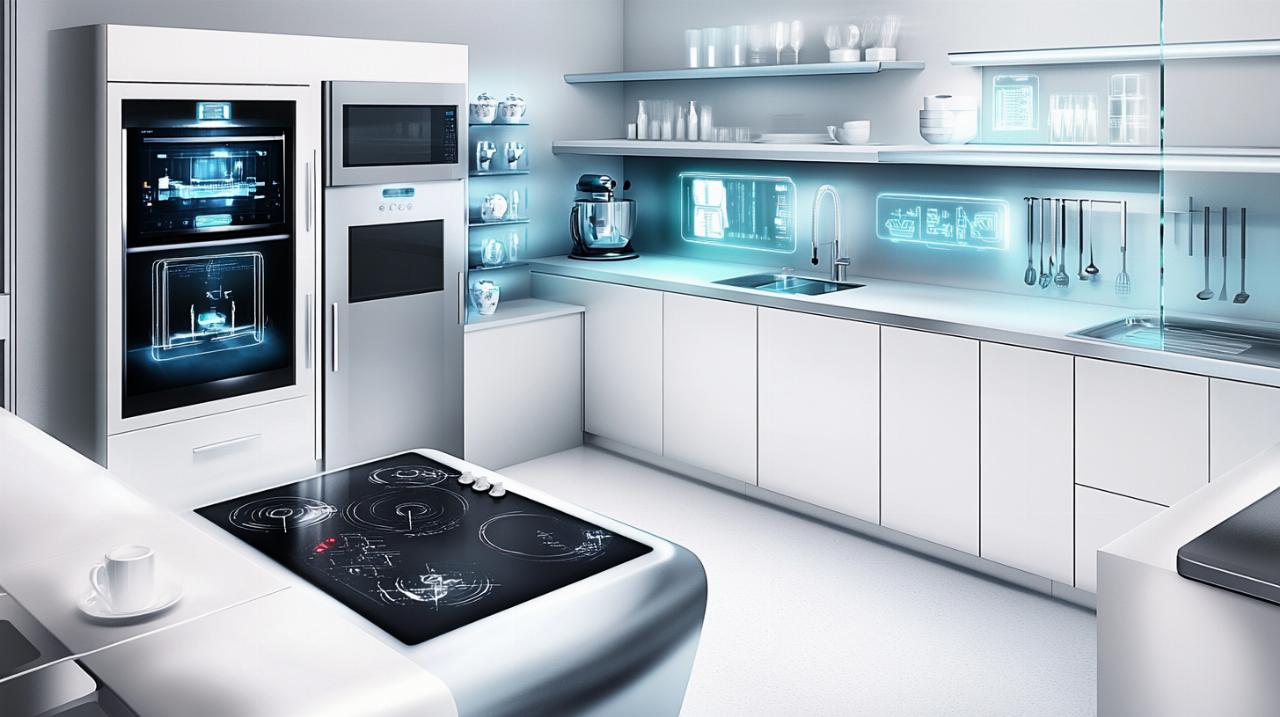Purchasing household appliances through the internet has become a favoured method for many, offering convenience and a vast array of choices at one’s fingertips. However, the sheer volume of options and varying levels of quality available can make the process somewhat daunting. Navigating this digital marketplace requires a careful approach, ensuring that the products selected not only meet practical requirements but also represent good value and reliability. Understanding the key considerations before committing to a purchase can transform what might seem like an overwhelming task into a straightforward and rewarding experience.
Conducting thorough research and price comparisons
Embarking on the journey to acquire new household appliances begins with diligent research. The digital realm offers an unparalleled opportunity to explore a multitude of products from the comfort of home, yet this abundance necessitates a methodical approach. One of the most effective online shopping tips involves dedicating time to understand the landscape of available options, comparing not just the products themselves but also the retailers offering them. This initial phase lays the groundwork for informed decision-making, helping to avoid hasty choices that might lead to disappointment.
Comparing prices across multiple retailers
The first step in securing a good deal involves casting a wide net across various online platforms. Different retailers often stock identical appliances at varying price points, influenced by promotions, stock levels, and business strategies. Taking the time to visit several websites and noting the cost of the desired item at each can reveal significant savings. Some platforms may offer exclusive discounts or bundle deals that are not immediately apparent, making thorough comparison an essential practice. Additionally, considering both large chain stores and smaller independent retailers can uncover hidden gems, where competitive pricing meets quality service. It is worth remembering that the cheapest option is not always the best, as factors such as delivery charges, customer service quality, and return policies also contribute to the overall value proposition.
Understanding product specifications and features
Beyond price, a comprehensive understanding of what each appliance offers is crucial. Product descriptions and specifications provide a wealth of information, from dimensions and capacity to energy consumption and operational noise levels. For instance, a washing machine might boast a capacity ranging from five kilograms, suitable for smaller households, to twelve kilograms, accommodating larger families. Similarly, understanding whether a tumble dryer’s running costs amount to forty pounds annually or exceed one hundred and fifty pounds can significantly impact long-term expenditure. Delving into these details ensures that the chosen appliance aligns with practical needs and budgetary constraints, avoiding the pitfall of purchasing equipment that is either insufficient or excessively equipped with unused functions.
Evaluating customer reviews and ratings
Once a shortlist of potential appliances has been compiled, turning attention to the experiences of previous buyers becomes invaluable. Customer reviews and ratings offer real-world insights that manufacturer descriptions often lack, shedding light on how products perform over time and in everyday settings. This feedback can reveal strengths and weaknesses that are not immediately obvious from specifications alone, guiding the final selection towards a reliable and satisfactory purchase.
Identifying genuine customer feedback
Navigating the sea of online reviews requires a discerning eye. Authentic feedback typically includes specific details about the product’s performance, installation process, and any issues encountered. Reviews that are overly vague or excessively effusive without substantive detail may warrant scepticism. Conversely, feedback that mentions particular features, such as how evenly a microwave defrosts food or whether a hob heats uniformly, tends to be more trustworthy. Checking the date of reviews can also be helpful, as products may undergo improvements or develop common faults over time. Seeking out patterns in feedback, where multiple users highlight the same positive or negative aspects, provides a clearer picture of what to expect.
Spotting common issues and praise points
Identifying recurring themes within reviews can be particularly enlightening. If several customers mention that a built-in oven tends to overheat by a significant margin, this signals a potential problem worth considering. Conversely, consistent praise for a dishwasher’s quiet operation or a fridge’s energy efficiency can instil confidence in the purchase. Understanding both the applause and the complaints allows for a balanced assessment, ensuring that expectations are realistic and that any potential drawbacks are acceptable within the context of the appliance’s overall utility and value.
Ensuring retailer credibility and avoiding fraudulent sellers
The online marketplace, while offering convenience, also presents risks associated with less reputable sellers. Ensuring that the chosen retailer is credible and trustworthy is paramount to safeguarding both financial investment and consumer rights. Vigilance in verifying the legitimacy of a seller can prevent unfortunate situations involving counterfeit goods, delayed deliveries, or inadequate customer support.
Recognising authorised dealers and trusted brands
Purchasing from authorised dealers and well-established brands provides a layer of security and assurance. These retailers typically adhere to industry standards, offer genuine products, and honour warranties and return policies. Checking whether a retailer is listed as an official stockist on the manufacturer’s website can confirm their legitimacy. Additionally, opting for brands with a proven track record of reliability, as indicated by customer surveys and expert testing, reduces the likelihood of encountering substandard products. While smaller or lesser-known retailers may offer attractive prices, ensuring they have verifiable credentials and positive customer feedback is essential before proceeding with a purchase.
Checking for Secure Payment Methods and Accreditations
Secure payment gateways and recognised accreditations are hallmarks of a reputable online retailer. Websites displaying secure connection indicators, such as a padlock symbol in the browser address bar, protect personal and financial information during transactions. Additionally, accreditations from consumer protection bodies or industry associations signal adherence to standards of quality and ethical practice. Reviewing the retailer’s terms and conditions, privacy policy, and customer service contact information can further confirm their legitimacy. Being wary of deals that seem too good to be true and avoiding retailers with unclear or unprofessional website designs helps mitigate the risk of falling victim to fraudulent sellers.
Understanding warranty coverage and returns policies
Even with meticulous research and careful selection, appliances can occasionally malfunction or fail to meet expectations. Understanding the warranty coverage and returns policies offered by both the manufacturer and the retailer is therefore essential. This knowledge provides recourse in the event of defects or dissatisfaction, ensuring that the investment is protected.

What manufacturer warranties typically cover
Manufacturer warranties generally cover defects in materials and workmanship for a specified period, often ranging from one to several years. However, the specifics can vary significantly between brands and product types. Some warranties may include comprehensive coverage for parts and labour, while others might be more limited. Understanding what is included and excluded from the warranty, such as damage resulting from misuse or normal wear and tear, helps set realistic expectations. It is also worth noting that certain high-value appliances may come with extended warranty options, which can be purchased separately to provide additional peace of mind. Reviewing the warranty terms before purchase and registering the product with the manufacturer promptly ensures that claims can be processed smoothly if needed.
Retailer return windows and conditions
In addition to manufacturer warranties, retailers often offer their own return policies, allowing customers to return or exchange products within a certain timeframe. The duration of this return window can vary, with some retailers offering thirty days while others may provide longer periods. Understanding the conditions under which returns are accepted is equally important. Products typically need to be in their original condition, with packaging and accessories intact. Some retailers may charge restocking fees or deduct the cost of return shipping from refunds. Clarifying these details before making a purchase ensures that there are no surprises should the appliance not meet expectations. Contacting the retailer as the first point of contact in case of issues is generally advisable, as they can often facilitate exchanges or returns more swiftly than going directly to the manufacturer.
Assessing your actual household needs
Amidst the allure of advanced features and sleek designs, it is crucial to remain grounded in the practical realities of household requirements. Appliances should be selected based on their ability to fulfil specific needs rather than their capacity to impress. A thoughtful assessment of what is genuinely necessary helps avoid overspending on capabilities that will remain unused.
Prioritising functionality over fancy features
Modern appliances often boast an array of features, from touch screens and smartphone connectivity to multiple cooking modes and smart diagnostics. While these innovations can enhance convenience, they also contribute to higher costs. Prioritising core functionality ensures that the appliance performs its primary role effectively without unnecessary complexity. For example, a washing machine that cleans clothes thoroughly and efficiently is more valuable than one with a multitude of settings that are rarely, if ever, utilised. Similarly, a straightforward kettle that boils water quickly and safely may be preferable to a model with elaborate temperature controls that are seldom needed. Focusing on reliability and performance over superfluous features often results in better long-term satisfaction and value.
Avoiding unnecessary spending on unused capabilities
Assessing lifestyle and cooking habits plays a significant role in determining which appliances are truly beneficial. A household that rarely bakes may not require a high-end combination microwave with extensive cooking functions, while a family that frequently prepares large meals would benefit from a washing machine with a higher capacity. Understanding the working triangle in the kitchen, the relationship between the hob, sink, and fridge, can also inform decisions about appliance placement and integration. For smaller spaces, integrated appliances that blend seamlessly with cabinetry can maximise efficiency without sacrificing style. Allocating a budget that reflects genuine needs, typically ten to twenty per cent of the overall kitchen budget for those with moderate cooking habits, or up to fifty per cent for enthusiastic cooks, ensures that spending aligns with usage patterns and household priorities.
Negotiating deals and seeking discounts
The art of securing a favourable price extends beyond simple comparison shopping. Many retailers are open to negotiation or offer opportunities to save through strategic purchasing decisions. Being proactive in seeking discounts and exploring various promotional avenues can yield significant financial benefits.
When and How to Request Price Reductions
While haggling may seem more suited to traditional markets than online shopping, many retailers are willing to match or beat competitor prices, particularly on higher-value items. Contacting customer service to inquire about price matching policies or requesting a discount, especially when purchasing multiple appliances, can sometimes result in unexpected savings. Timing purchases to coincide with sales events, such as end-of-season clearances or promotional periods, also increases the likelihood of securing reduced prices. Demonstrating awareness of competitor pricing and expressing genuine interest in purchasing can encourage retailers to offer concessions, making the effort to negotiate a worthwhile endeavour.
Bundle purchases and seasonal offers
Purchasing multiple appliances together often qualifies for bundle deals, where retailers provide a discount for buying several items simultaneously. This approach is particularly advantageous when outfitting a new kitchen or replacing multiple appliances at once. Additionally, keeping an eye on clearance sections and seasonal offers can uncover substantial savings. Retailers frequently discount older models to make space for newer stock, and these products often perform just as well as their successors at a fraction of the cost. Subscribing to newsletters or following retailers on social media can provide early notification of upcoming sales, allowing for strategic timing of purchases to maximise value.
Verifying dimensions and energy efficiency
Practical considerations such as size and energy consumption are easily overlooked in the excitement of selecting a new appliance, yet they have a profound impact on both immediate functionality and long-term costs. Ensuring that an appliance fits the designated space and operates efficiently is essential to a successful purchase.
Measuring your space before purchase
Accurate measurement of the intended location for an appliance cannot be overstated in its importance. A fridge that is too wide for the allocated gap or a washing machine that cannot fit through doorways leads to significant inconvenience and potential additional costs for returns or modifications. Taking precise measurements of height, width, and depth, as well as accounting for any ventilation requirements or clearance needed for doors to open fully, prevents such mishaps. Visualising the appliance within the space, considering how it will interact with surrounding cabinetry and pathways, also contributes to a harmonious and functional layout. Consulting product dimensions provided by the manufacturer and comparing them carefully against the available space ensures a proper fit.
Calculating running costs and energy ratings
Energy efficiency ratings provide valuable insight into the long-term operational costs of an appliance. A tumble dryer with poor efficiency might cost over one hundred and fifty pounds annually to run, whereas a more efficient model could reduce this to around forty pounds, representing substantial savings over the appliance’s lifespan. Similarly, understanding the energy consumption of refrigerators, washing machines, and dishwashers helps in making financially prudent choices. Appliances with higher energy ratings, indicated by labels such as those used in the United Kingdom, often command a higher initial price but pay for themselves through reduced electricity bills. Calculating the anticipated running costs based on typical usage patterns allows for a comprehensive assessment of the appliance’s true value, balancing upfront expenditure against ongoing operational expenses.






















